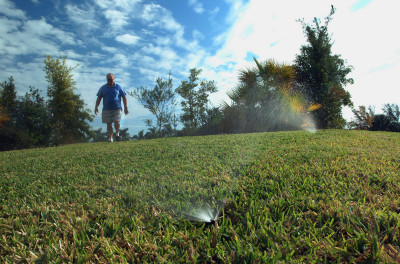 Dr. Laura Warner is an assistant professor of extension education in the Department of Agricultural Education and Communication at the University of Florida. She focuses on program evaluation, behavior change, and social marketing. Her appointment supports the Center for Landscape Conservation and Ecology (CLCE) in IFAS by providing professional development, resources, and evaluation support to extension professionals who promote sustainable landscape management practices. Warner earned Bachelors and Masters degrees from the University of Florida and her doctorate from Texas A&M and Texas Tech Universities. Warner’s Extension program supports the mission of the University of Florida by developing strategies for creating and measuring behavior change at all stages from program planning through evaluation. Extension programming focuses on enhancing the program development and evaluation competencies of Extension and outreach professionals who encourage responsible use of natural resources and sustainable practices in the landscape.
Dr. Laura Warner is an assistant professor of extension education in the Department of Agricultural Education and Communication at the University of Florida. She focuses on program evaluation, behavior change, and social marketing. Her appointment supports the Center for Landscape Conservation and Ecology (CLCE) in IFAS by providing professional development, resources, and evaluation support to extension professionals who promote sustainable landscape management practices. Warner earned Bachelors and Masters degrees from the University of Florida and her doctorate from Texas A&M and Texas Tech Universities. Warner’s Extension program supports the mission of the University of Florida by developing strategies for creating and measuring behavior change at all stages from program planning through evaluation. Extension programming focuses on enhancing the program development and evaluation competencies of Extension and outreach professionals who encourage responsible use of natural resources and sustainable practices in the landscape.
By Laura Warner, Ed.D.
Assistant Professor, University of Florida Department of Agricultural Education and Communication
We rely on water for various purposes, and there is no question that it is important to make sure there is enough of this limited resource to go around. While we need it to survive – for drinking and for growing food – water supports our well being in a myriad of ways. Personally, I find peace while paddling my kayak, listening to the rain, and hiking around our beautiful springs.
I’m not alone: Floridians care about water – they rate water equally as important as the economy and healthcare – and Florida’s rapidly growing population will demand more and more of this resource. We often take for granted the luxury of turning on the faucet and clean water appearing before us or turning on our sprinklers to transform our y ards into a plush green landscape when it has not rained in days. During our rainy season, it is hard to imagine not having enough water. Yet, the dynamics of our Florida climate, paired with environmental and human impacts, demonstrate that we need to pursue all possible solutions to conserving our water resources. A major portion of household water use can be directed toward the home landscape, and there is a real opportunity to conserve water here.
ards into a plush green landscape when it has not rained in days. During our rainy season, it is hard to imagine not having enough water. Yet, the dynamics of our Florida climate, paired with environmental and human impacts, demonstrate that we need to pursue all possible solutions to conserving our water resources. A major portion of household water use can be directed toward the home landscape, and there is a real opportunity to conserve water here.
People tend to get pretty emotional about their yard and their neighbors’ yards. Its rare to find someone who doesn’t strongly believe that a landscape should have lots of grass, or no grass, or look identical to the neighborhood standard, or look nothing like anyone’s in the neighborhood. Recent PIE Center research revealed that nearly half of Floridians believe it is really important to have enough water for residential landscapes. However, there are a lot of inconsistencies in opinion. Interestingly, half weren’t really sure about turfgrass lawns’ impact on the environment or water resources. Nearly half weren’t sure if turfgrass requires too much water to maintain. Additionally, almost half wouldn’t choose native plants over turfgrass, while most of the rest weren’t sure.
If you’ve witnessed a community feud in the news over the past few years, over too much turfgrass, not enough, or even artificial grass, you are probably surprised that the majority of Floridians are relatively neutral about lawns. However, they are sandwiched between those who are really divided – a quarter of Floridians feel that turfgrass is unnatural and another quarter feel quite the opposite. Why the neutral stance? Is it because so many of our residents, like myself, come from somewhere else where grass just grows on its own when springtime rolls around? Or is it because most people are exposed to the extreme polar viewpoints and they’re not sure which information to trust and which way to lean?
I see this as a real opportunity to bring people together over turfgrass and landscapes. Research from UF/IFAS and many other great research universities demonstrates that turfgrass can be the right plant when planted in the right place and, when managed appropriately, can provide innumerable environmental and social benefits. At the same time, turfgrass managed improperly or planted where it doesn’t belong can be environmentally harmful, not to mention stressful on its caregiver. Additionally, yards can be healthy, attractive, and even formal without any grass at all. There is an important balance between what is right for site conditions, what meets our human needs, and what the science says.
Researchers and communicators should always develop outreach strategies through the eyes of their audience, and this research on the public perceptions of water, turfgrass, and landscaping is a great place to start. There is an opportunity here to educate the majority – those who are not sure about the relationship between turfgrass and water issues. There is also an opportunity to use the polar divide of the others to create a space to talk about water issues and come together to develop solutions. Water is something we all have in common, and a glimpse at Floridians’ perceptions of this special natural resource lays the foundation for deliberate progress towards conservation.

















